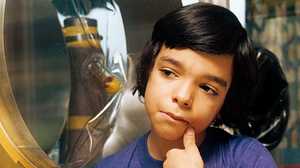David Vetter's Death

On October 21, 1983, David Vetter received a bone marrow transplant from his older sister Katherine. When David was first diagnosed with severe combined immunodeficiency (SCID) as a newborn, a transplant from a sibling had seemed like his best hope for survival. That treatment had worked on other SCID-afflicted children. Unfortunately, Katherine's marrow was not an exact match for David's, and he had spent twelve years in plastic isolator bubbles waiting for a compatible donor or a cure for SCID.
An Experimental Treatment
In the intervening years, doctors in Boston developed a procedure to treat bone marrow that wasn't a perfect match so that the recipient could accept it. Once injected into the blood stream of an immunodeficient patient, the marrow would help establish an immune system. Carol Ann Vetter remembers, "Our doctors told us that the operation was proving very successful, and that it was 99 percent safe. They said it would either work or not work. But if it didn't work, we would simply be back to square one." In fact, according to author James Jones, the group in Boston where they were trying to do the unmatched bone marrow had done only two: one had worked, one had not. It was a brand-new, experimental procedure that was undertaken because David's situation had become untenable.

Decision to Try
His parents made sure 12-year-old David understood the procedure and would be willing to go through with it. Although he doubted the efficacy, he agreed to try. In October Katherine and her mother flew to Boston where the marrow was extracted and treated. Back in Houston, David assisted his doctors with the injections, since it was difficult for them to work inside the bubble.
Unscreened Virus
The doctors' initial fear was a condition known as graft versus host disease (GVHD), in which the healthy white blood cells from the donor would attack the tissue encountered in David's body. The symptoms of GVHD never appeared. However, unbeknownst to the doctors, the Epstein-Barr virus was not screened from Katherine's marrow and was inducing lymphoma, a form of cancer, in her brother.
Anxious to Be Well
David spent Christmas at home with his family. Back in the hospital after New Year's Day, David became sick for the first time in his life. His temperature began spiking at 105 degrees Fahrenheit. He began to vomit and had diarrhea. Doctors worried about dehydration. They debated whether or not to remove David from his bubble. In response to a direct question from his father, David replied, "Daddy, I will agree to anything to feel better."
Out of the Bubble
On February 7, 1984, David came out of his bubble and into a disinfected room much like the one he was born in. His family, dressed in sterile clothes, touched him. David smiled at all the strange tickling sensations. "Stop it!" he cried. "His voice sounds different outside the bubble," Katherine said. Carol Ann thought his hair was thicker than she had imagined.
Saying Goodbye
As the lymphoma silently progressed, David's condition worsened, and he knew it. "This is not working," he told his mother. "I'm tired. Why don't we just pull all the tubes out and let me go home?" On February 22, as his friend psychologist Mary Murphy was leaving, instead of his usual "I'll see you later," David told her "Remember, I love you, Mary. Goodbye." The last words he spoke that day to his mother were, "I love you all too." Then he winked at his doctor and went to sleep. He was given last rites and then his mother removed her mask and kissed him for the first time. A few minutes later, David was pronounced dead. Yet his legacy would live on in many ways.







